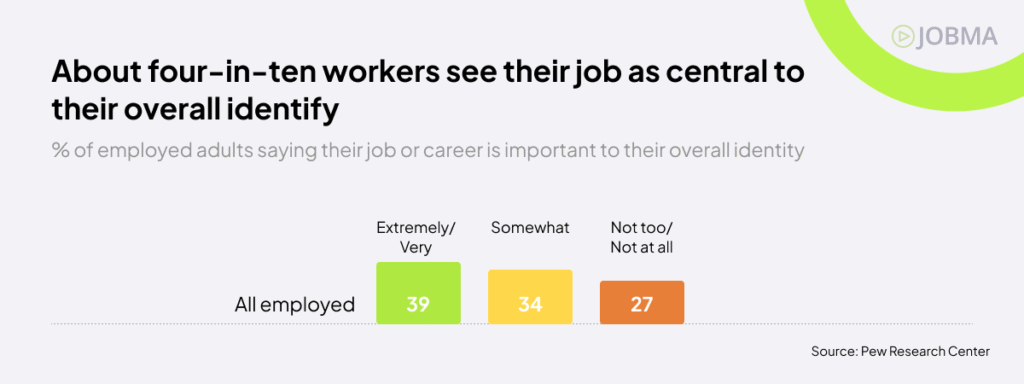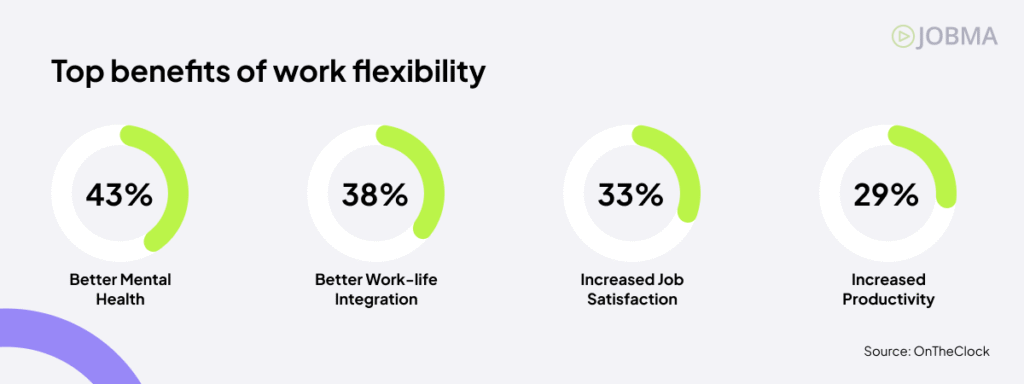From Burnout to Brilliance: The 5 Key Pillars of Job Satisfaction
Employees perform better when they feel good about their work and confident about where their careers are heading. Today’s workforce wants more than a paycheck. They want fulfillment, growth, flexibility, and a sense of purpose. When organizations support these needs, everyone benefits. Culture gets stronger, satisfaction rises, productivity improves, retention goes up, and teams become more resilient.
By understanding and prioritizing the core pillars of job satisfaction, companies can build workplaces where people feel motivated, supported, and able to do their best work.
Why Job Satisfaction Matters for Success
Job satisfaction directly influences outcomes that shape business performance. Retention, productivity, and engagement all improve when people genuinely enjoy where they work. Happy employees tend to stay longer, reducing the cost and effort of rehiring and retraining. They also take more initiative and solve problems before they grow.
When people feel proud of the work they do, they show up differently. They’re more engaged, they perform better, they share ideas, and they contribute more meaningfully to team goals. Since 39% of employees say work is a core part of their identity, dissatisfaction carries weight. It affects motivation and performance and often becomes the push that makes someone start looking for new opportunities.
A workplace built around satisfaction becomes stronger from within. It creates a culture where people want to excel and where teams can grow without burning out.

The 5 Key Pillars of Job Satisfaction
Once you recognize how important employee satisfaction is, the next step is putting the right habits and systems in place. Here are five areas every organization should focus on:
1. Set Realistic Expectations
Start setting expectations early. Candidates should be able to picture what an average day looks like and understand what their responsibilities truly involve. That clarity helps them decide whether the role is right for them and prevents confusion later.
There’s often a temptation to oversell a position. It may fill the role faster, but it harms trust in the long run. When employees realize the reality doesn’t match what they were told, they disconnect, lose confidence in leadership, and may eventually leave or engage in “quiet quitting.” Honest expectations set the foundation for a healthy, long-term working relationship.
2. Create Opportunities to Learn Through Experience
Employees feel more satisfied when they get the chance to learn and try new things. Give them opportunities to work on different projects, collaborate with other teams, or take on assignments that stretch their skills. Job rotations or short-term projects can broaden their experience and help them grow professionally.
Support learning outside the organization as well – online courses, workshops, conferences, certifications. When people see that growth is encouraged, they feel more invested in their work and the company.
3. Make Work Convenient
Convenience and flexibility play a huge role in job satisfaction. Flexible schedules, remote work options, or adaptable roles give employees more control over their day. With that control comes lower stress, higher productivity, and a more positive attitude toward work. In fact, 43% of employees claimed to have better mental health, and a third reported better job satisfaction, when they had greater flexibility.
Technology and processes matter too. Simple, efficient systems remove friction and make it easier for employees to focus on the work that actually matters.

4. Recognize Employee Efforts
Recognition is a powerful motivator, it’s a small gesture with a big impact. When people feel seen and appreciated, morale rises. Productivity often follows. Recognition doesn’t need to be elaborate – sometimes a genuine “thank you” or a mention in front of the team is enough. What matters is that it feels sincere and consistent.
When employees know their work is valued, they stay loyal and continue to put in their best effort. Over time, that commitment strengthens teams and drives better outcomes.
5. Establish an Open, Collaborative Culture
A collaborative environment helps employees feel connected to something bigger than their individual tasks. It builds camaraderie and a shared sense of purpose. Openness also encourages trust – ideas flow more freely, feedback becomes easier, and communication improves across teams.
People feel psychologically safe in a culture like this. They’re more willing to share, experiment, and grow. Collaboration also exposes employees to different perspectives and skills, which supports both personal and professional development.
Takeaway
Job satisfaction isn’t a one-time effort. It’s an ongoing practice that shapes how people experience their work every day. Clear expectations, growth opportunities, flexibility, recognition, and a culture of collaboration form the foundation of a workplace where employees feel supported and motivated.
Teams that experience this level of support are more engaged, more productive, and more committed to the organization’s long-term success.
Author
Dean Mathews is the founder and CEO of OnTheClock, the easy-to-use employee time tracking, scheduling, PTO, and payroll app that helps over 16,000 small businesses and 180,000 people worldwide.
With over 20 years of experience designing and developing business applications, Dean views software development as a true art form. In his eyes, when a product is crafted with care and precision, it can touch lives, transform businesses, and make work better for countless people.
When he is not perfecting time tracking, Dean enjoys spending time with family and friends, and finding ways to make the world just a little better. Dean Mathews on LinkedIn.
Disclaimer: This article was authored by a guest contributor or third party. The views expressed are their own and do not necessarily reflect those of Jobma. Jobma does not endorse any products, services, or claims mentioned. This content is for informational purposes only.



